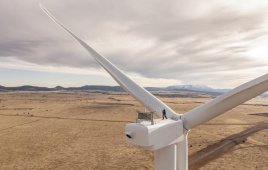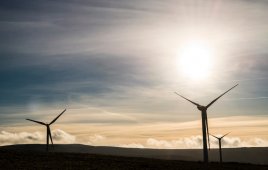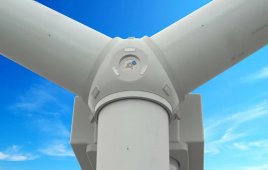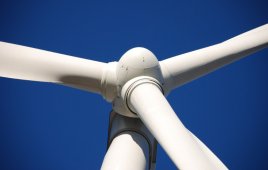Manufacturing the trailing edge of a wind turbine blade with an elastic material could let the blade shed the often considerable dynamic loads during operation. ”Providing the blade with a movable trailing edge makes it possible to control the load on the blade and extend the working life of wind-turbine components,” says Helge Aagaard Madsen, Research Specialist on the project at Riso DTU in Denmark.

The protype trailing edge fits a blade airfoil section with a 1-m chord. The section is being produced for wind-tunnel testing. ”If results confirm our estimates, we will test the rubber trailing edge on a full-scale wind turbine in a few years” says Madsen.
“This is similar to the technique used on aircraft, where flaps regulate lift during take-off and landing,” he says.
As you’d expect, there is a difference between aircraft and turbine blades. For one, movable aircraft flaps are nondeformable and hinged to the trailing edge of the main wing. The new technique means a continuous surface of the profile on the wind-turbine blade even when the trailing edge moves. That would be possible by constructing a trailing edge from an elastic material that is also part of the main blade.
Madsen says that since the first patent on the idea in 2004, there has been significant development. Part of the research has been aimed at the design and development of a durable and controllable trailing edge. This has now led to the manufacturing of a trailing edge of rubber with built-in, fiber-reinforced cavities. The cavities, in combination with the directional fiber reinforcement, provide the required movement of the trailing edge when the cavities are under pressure.
“Several prototypes have been manufactured with chord lengths of 15 and 30 cm. A best version shows promising results in terms of deflection and speed of the deflection” says Madsen.
Filed Under: Blades, Turbines




